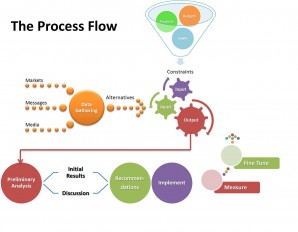 Are you a “spray and pray” marketer who tries to sell your product or service to anyone and everyone? How is that working for you?
Are you a “spray and pray” marketer who tries to sell your product or service to anyone and everyone? How is that working for you?
To be most effective you need to find people with problems that you can solve. It’s best if you are the only solution, fairly good if you are one of a few with a good reputation and not so good if you are one of many and have to compete on price.
Once upon a time, many years past, I marketed expensive automatic test equipment for the electronics companies of the world. Doing that gave me the opportunity to learn some important things. One of those things was that the design of the product to be tested had a lot to do with the time, effort and cost of generating an effective test program and with actually testing the product in a manufacturing environment. Another was that design engineers couldn’t care less about manufacturing test because that was someone else’s problem. They just had to get the functionality right on a very tight schedule. The third thing was that test engineers, who had to solve the problems that were “thrown over the wall” from development engineering to manufacturing test, were desperate for help.
Thus came the opportunity to write a book. It contained all of the techniques needed to make complex electronic designs much easier to test. The initial self-published hardcover version sold for $95 (in 1978 dollars) and it was advertised in Electronics Test magazine to the small portion of electronic engineers who worked in the manufacturing test environment. Why not in Electronic Design magazine, with its much wider audience? Because the design engineers who read that magazine didn’t have the problem, even though they were the only ones who could implement the solutions to the downstream problems.
So while the book taught design techniques, it was sold to the test people who could then use it as a lever to convince engineering and top management that the topic was important enough to warrant a book being written about it. And one that contained the tools needed to make the economic justification for designing things to be testable as well as functional.
This is but one example of using the right media selection to get the message out to the people with a problem to solve. Much more cost effective than trying to sell to the “unwashed masses.”
Comments, please. And thanks for reading.





